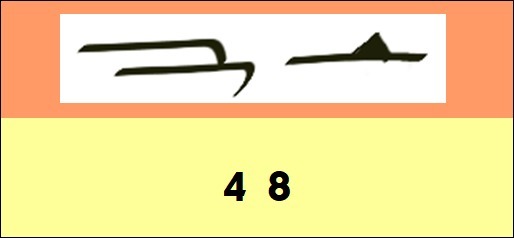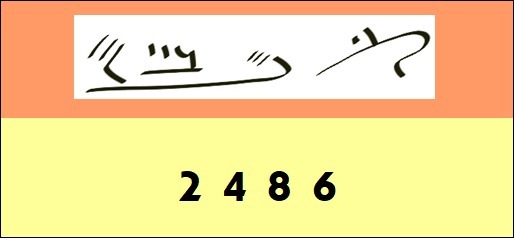The Egyptians developed a numbering system about 3000 years ago. This system has its own characteristics and presented at the time some innovations that we use until today, such as the base 10.
The numbers represented by hieroglyphs were mostly used in monuments and temples, painted or carved in stone. There are seven symbols, representing the numbers 1, 10, 100, 1000, 10 000, 100 000 and 1 000 000.
Egyptian Hieroglyphic Numbers

Writing with hieroglyphics is not positional, that is, symbols do not have different values depending on the position they were written. Another feature is that it is an additive system where numbers are made up of sums of digits.
Examples of hieroglyphic numbers

Egyptian hieratic numbers
Hieratic writing was the usual form, most used to solve everyday problems. This form of numbers is positional, as the order in which the symbols appear is considered, in addition to having a larger number of symbols.
Hieratic writing was more used and was found in papyrus such as Rhind, Berlin and Moscow, which are currently in museums. In these documents, various problems of everyday life are described using hieratic numbers.
There is a symbol for each number from one to nine, for tens, hundreds and thousands.

Examples of Hieratic Numbers
In hieratic numbers the position in which they are written is important. To write the number 48 from left to right, we first use the symbol for eight units and then for four tens.

In larger numbers, the arrangement of units and tens fits into the hundreds digit.

Learn more about:
- History of Mathematics
- History of numbers: origin and evolution of numbers


